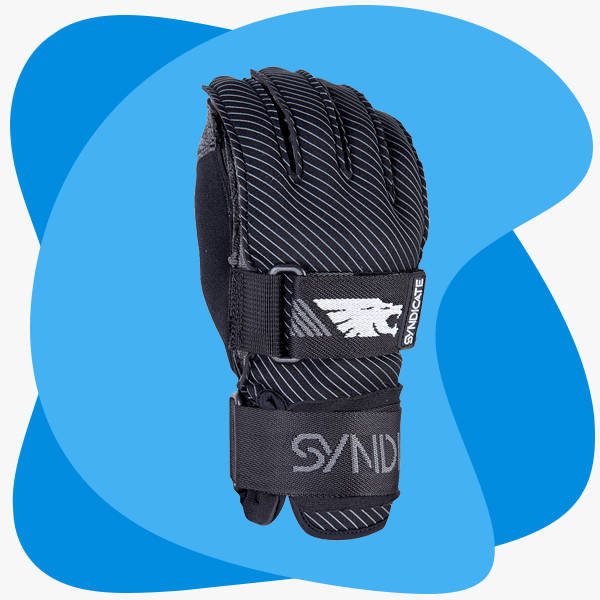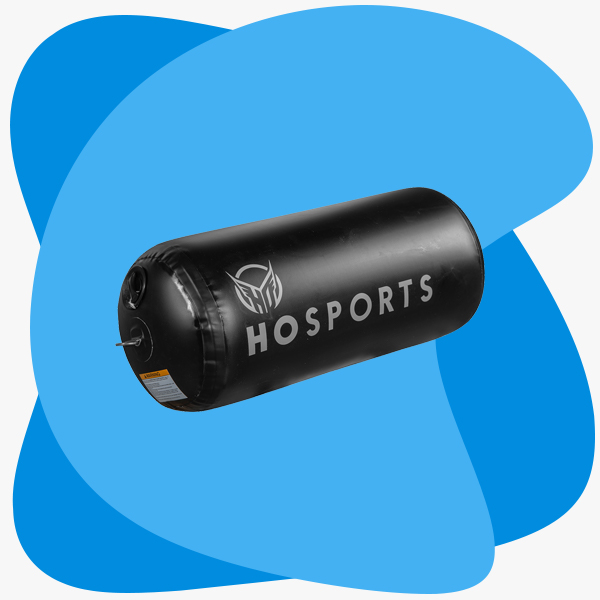Maintenance & Care
Tips For Your Water
Skiing Equipment

Water sports enthusiasts understand that the thrill of slicing through waves on water skis is unparalleled. This exhilarating experience, however, hinges not just on one's skill but also on the quality and condition of the water skiing equipment used. From the water skis themselves to the life vest that ensures your safety, every piece of equipment plays a vital role in your adventure.
Maintaining this equipment, therefore, is of utmost importance. Proper care not only optimises its performance, ensuring that every water skiing outing remains enjoyable, but also significantly extends the lifespan of the gear, making it a cost-effective practice.
In this comprehensive guide, we delve into the essentials of maintaining and caring for your water skiing equipment. No matter if you're a seasoned water skier or a beginner just dipping their toes into the sport, this guide aims to provide valuable insights to help you take the best possible care of your water skiing gear.
Understanding Your Water Skiing Equipment
Water skiing equipment comprises a number of items, each serving a crucial role in your performance and safety. The primary equipment includes water skis, a tow rope with handle, life vest, and other accessories, and understanding each of these components is the first step towards proper care and maintenance.
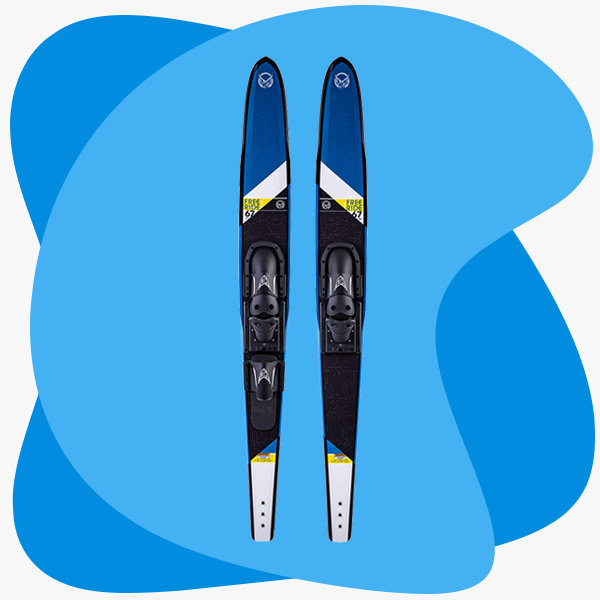
Water Skis
Water skis are the centrepiece of your water skiing gear. These specially designed skis allow you to glide on water while being towed by a boat. Water skis come in an array of designs and are often tailored to the type of skiing you intend to do. For instance, slalom skis are typically used for a one-ski format, while combination pairs are great for those learning the sport. Trick skis, on the other hand, are perfect for freestyle skiing and performing tricks.
The length and width of these ski’s can vary, and there are specific models designed for children, adults, or based on weight classes. Certain water ski brands specialise in crafting skis that deliver unparalleled performance and superior stability, so you can make the most out of your water skiing experiences.
Water Ski Life Vests
Water ski life vests are an indispensable part of your water skiing gear, as their primary function is to keep you afloat in the water. This vital piece of safety equipment comes in various styles and sizes- some vests are designed with additional features like segmented foam panels for extra flexibility, or a hidden belt for a more streamlined fit.
Regardless of the style, it's crucial that your life vest fits snugly yet comfortably and complies with the necessary safety standards.
Water Ski Gloves
Offering a dual role of protection and improved grip, water ski gloves are an essential accessory for any water skiing enthusiast. Made from durable, water-resistant materials such as neoprene, these gloves are designed to withstand the rigours of water skiing while providing comfort.
The palm area usually features reinforced or textured fabric to ensure a secure grip on the handle, and some gloves may also have padded sections for additional comfort, and adjustable wrist straps for a secure fit.
Water Ski Accessories
Water ski accessories are a varied set of additional items that can enhance your water skiing experience, offer better safety, or aid in the maintenance and longevity of your primary equipment.
Be it from the sun's glare or the water spray, your eyes need protection while water skiing. Quality sunglasses or goggles with UV protection are a great investment. Look for designs that are comfortable to wear, provide excellent visibility, and stay secure even with the intense activity of water skiing.
Despite your best efforts, minor damage to your water skis or other equipment can occur. A water ski repair kit usually contains epoxy or a similar adhesive for minor patchwork, along with other necessary tools. Having a repair kit on hand allows you to address small issues immediately, preventing them from escalating.
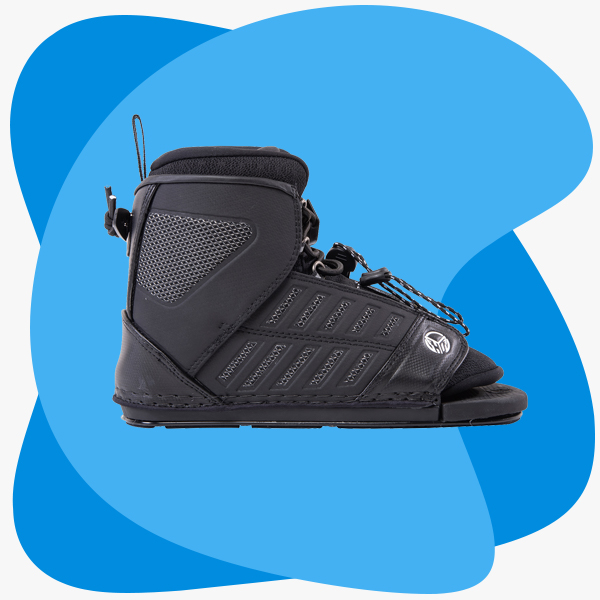
Water Ski Bindings
Water ski bindings are a key component that connects you to your skis. Also known as boots, these are attached to the skis and are designed to fit around your feet snugly. They play an essential role in maintaining balance and control, providing the needed support and allowing the effective transfer of movement from your body to the skis. They come in various sizes and styles – from adjustable bindings that can accommodate different foot sizes to high-end custom-fit models that offer advanced features for comfort and performance.
Water Ski Ropes & Handles
Water ski ropes and handles form the lifeline connecting you to the boat. The quality, durability, and design of these elements can significantly influence your performance and safety while water skiing. The rope needs to be incredibly strong to withstand the high-speed pull of the boat and flexible enough to enable smooth navigation through the waves. Ropes used in water skiing are typically made from polyethylene or polypropylene, both of which are lightweight, durable, and resistant to water absorption. They also exhibit a certain level of elasticity, which provides the skier a bit of 'give' during quick turns or jumps. Water ski ropes can vary in length, typically ranging from 60 to 75 feet, with shorter ropes for beginners and longer ones for advanced skiers. Some ropes come with sections of different colours, allowing the skier to adjust the length based on their skill level or the challenges of the water conditions. The handle is equally important in water skiing. It should provide a comfortable grip to prevent your hands from tiring quickly and to maintain control over your direction and balance. The handles are usually made from aluminium or plastic cores, coated with rubber, and sometimes wrapped in softer materials for enhanced comfort and grip. Their design can vary to accommodate different skiing styles – wide handles are suitable for slalom skiing, while narrower or T-bar handles are preferred for trick skiing.
Shop All Water Ski Ropes & Handles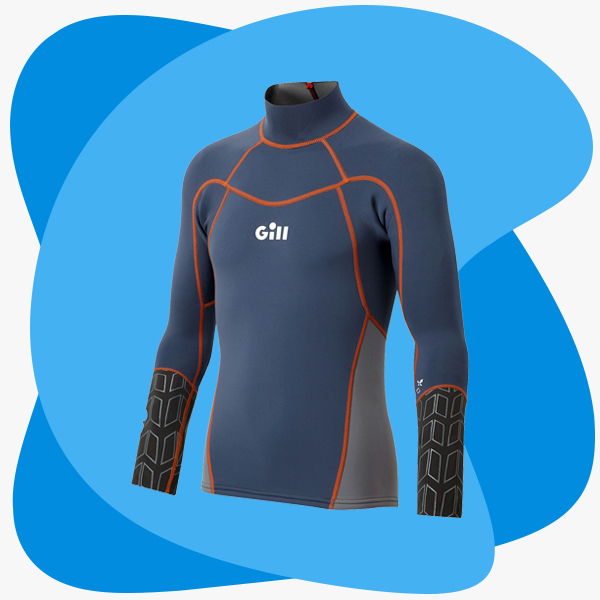
Wetsuits for Water Skiing
Wetsuits play a crucial role in ensuring comfort and safety while participating in water sports, including water skiing. They provide thermal insulation, abrasion resistance, and buoyancy – three factors that are critical in different water conditions and temperatures. Wetsuits are typically made from a type of rubber called neoprene, and in terms of design, they come in a variety of styles and thicknesses, each suited to different weather conditions and activities. Full suits cover both the arms and legs and are perfect for colder temperatures. Spring suits, or "shorties," have short legs and either short or long sleeves and are suitable for warmer conditions. The thickness of the suit is another critical factor to consider. It's usually measured in millimetres, with thicker suits offering more insulation for colder water. Check out our diving wetsuits buying guide for more detail and specifications so you can choose the right suit for your needs!

Water Ski Bags
Protecting your water skis from damage and making transportation easier, water ski bags are a must-have accessory. They come in various designs, from simple slip-on covers to padded bags with compartments for additional equipment. High-end water ski bags may also feature wheels for easier transportation and reinforced handles for durability.

Understanding Material Composition
The material composition of water skiing equipment plays an instrumental role in determining their performance, durability, and how they should be cared for. Here's a closer look at the various materials used in different parts of your water skiing gear:
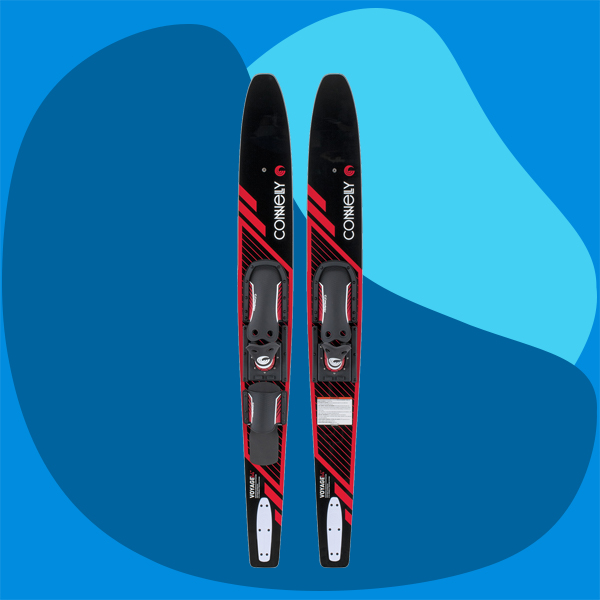
Water Skis
Water skis are predominantly constructed from fibreglass or carbon fibre, which are layered around a core typically made from foam or wood. Fibreglass skis are appreciated for their durability, affordability, and flexibility – qualities that make them forgiving for beginner and intermediate skiers.
Carbon fibre skis, on the other hand, are lightweight and stiff, offering a high level of responsiveness that is desirable for advanced and professional skiers. Cores made from foam are lightweight and buoyant, offering a smooth and consistent performance, whereas wood cores, while slightly heavier, provide more flex and a lively feel.
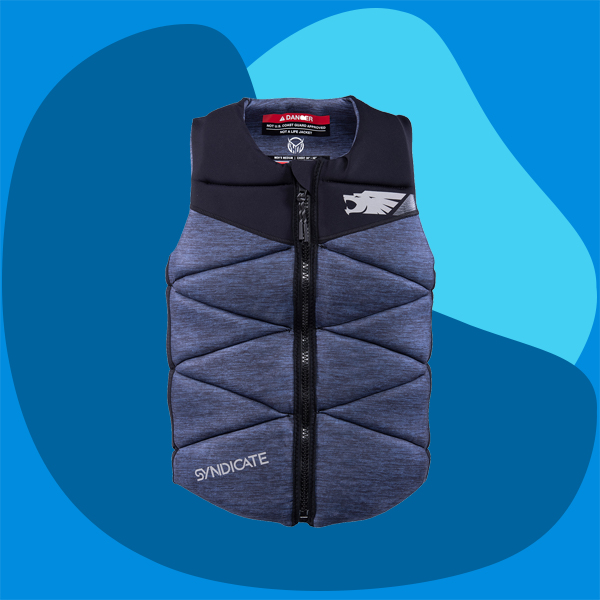
Life Vest Materials
Life vests are primarily constructed from buoyant materials like PVC or polyethylene foam that provide flotation. These are encased in a shell made from durable and water-resistant materials such as nylon or neoprene. Some vests also incorporate flexible sections or segmented foam panels to offer greater mobility.
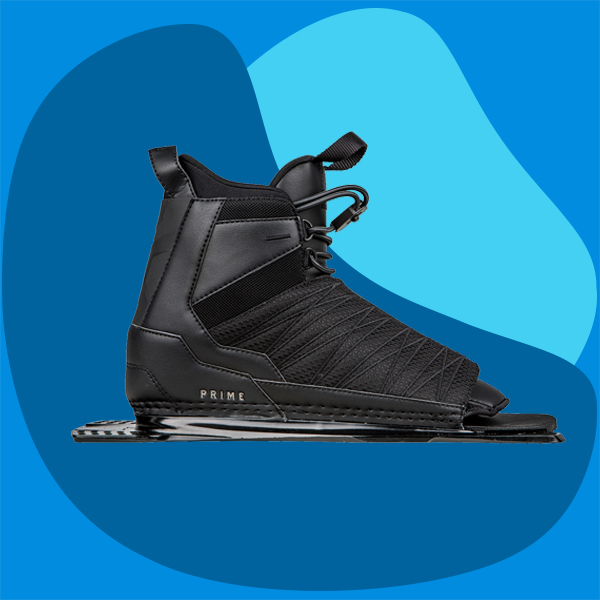
Water Ski Binding Materials
Bindings or boots are usually made from a combination of materials. The outer shell is often constructed from rigid materials such as plastic or composite materials to provide support.
The inner boot is typically made from foam, leather, or synthetic materials to offer comfort and a snug fit. Some high-end models even feature heat-moldable liners that conform to your foot shape for a perfect fit too.
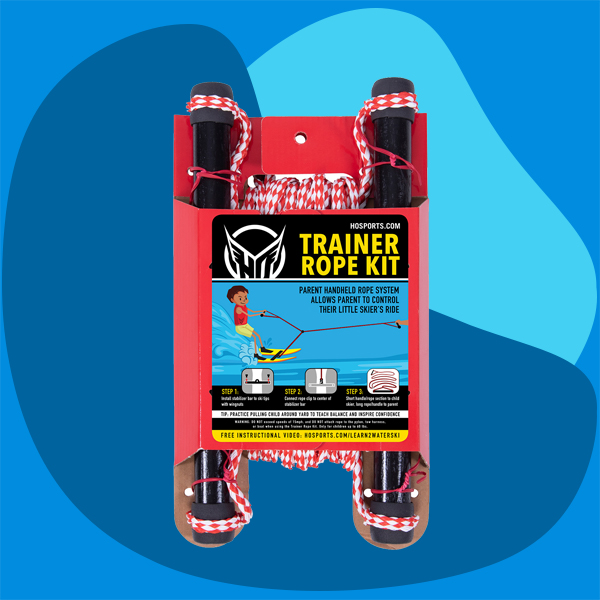
Ropes & Handles Materials
Ropes and handles are engineered for durability and strength. The ropes are typically made from polyethylene or polypropylene – materials that are strong yet lightweight and resistant to water absorption. These materials also provide a slight stretch, which is beneficial when making turns or jumps. Handles often feature a core made from aluminium or plastic, coated with rubber, and sometimes wrapped with softer materials for a comfortable and secure grip.

General Water Ski Maintenance Tips To Consider
Maintaining your water ski equipment is not just about preserving its life but also about ensuring optimal performance and safety. Here are some general maintenance tips you should always consider:

Cleaning After Use
Every time you use your equipment, it's exposed to elements like saltwater, sunlight, and sand, which can cause damage over time. Therefore, cleaning your gear after each use is critical. Rinse your water skis, bindings, ropes, and handles with fresh water to remove any salt, dirt, or other debris. For tougher stains or deposits, a gentle cleaner suitable for the specific material can be used- don't forget to clean your life vest and accessories like gloves too.

The Importance Of Proper Storage
Storing your water ski equipment correctly when not in use is just as important as cleaning it. Keep your gear in a cool, dry place away from direct sunlight. Using a water ski bag for storing your skis can protect them from dust and accidental scratches or impacts. Similarly, ropes and handles should be loosely coiled or hung up, not tightly wound, to avoid unnecessary stress on the material.

Repairs & Replacements
If you identify any minor damage during your routine checks, like small scratches or nicks on your skis, use a repair kit to fix them promptly. For more significant damage or wear, like deep gouges in your skis, frayed ropes, or non-functioning buckles on your life vest, it's essential to replace the equipment or seek professional help.
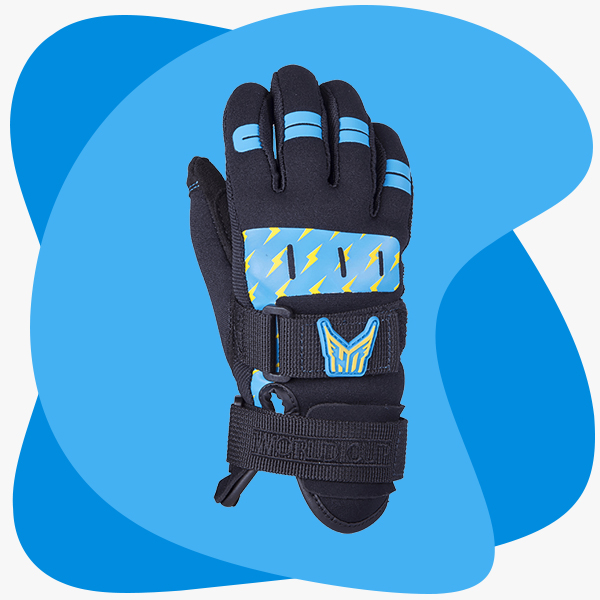
Thorough Drying Tips
After cleaning your equipment, always dry it thoroughly before storing. Storing damp equipment can lead to issues like mildew or material degradation, so hang your equipment in a well-ventilated area out of direct sunlight for drying. Remember that excessive heat or direct sunlight can cause materials to fade or become brittle.
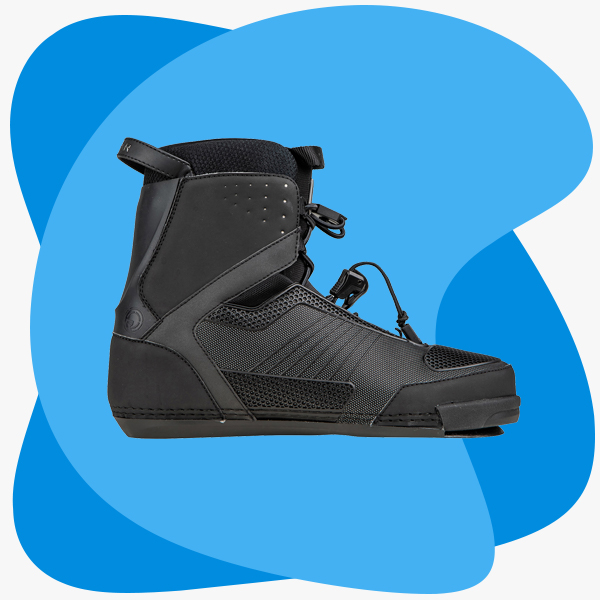
Why Routine Inspections Are Key
It’s vital to regularly check your equipment for any signs of wear or tear. Look for cracks or delamination in your skis, frayed ropes, worn-out handles, or damaged bindings, and your life vest should also be checked for any tears or reduced buoyancy.
Regular inspections allow you to spot any potential issues early and address them before they can cause accidents or equipment failure.
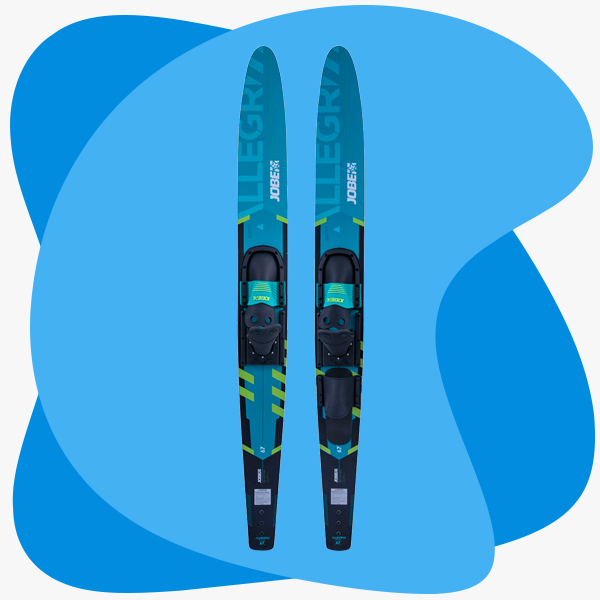
Seasonal Maintenance
If you're storing your gear for an extended period, such as over the winter, consider doing some extra maintenance.
This might include deep cleaning your equipment, applying a protective wax coating to your skis, or conditioning the rubber parts of your gear to keep them from drying out.

Detailed Equipment Care Instructions
Looking after your water ski equipment requires attention to detail and a systematic approach. Each item in your gear has its unique characteristics and hence, specific care instructions.

Ropes & Handles Maintenance
These crucial components need to be rinsed thoroughly after each use. Salt and dirt can degrade the material over time, affecting the strength of the rope. Dry them out of direct sunlight, as excessive UV exposure can make the material brittle. Store the ropes loosely coiled or hung up, not tightly wound, to prevent unnecessary stress, and look out for signs of wear like fraying or discoloration regularly.

Life Vest & Gloves Maintenance
Rinse your life vest and gloves with fresh water after each use to remove salt, dirt, or sweat using a mild soap if necessary and rinsing thoroughly. Allow them to air dry completely before storage, and make sure to check for any tears, damaged fastenings, or decreased buoyancy in your life vest. Similarly, gloves should be inspected for any worn-out areas or loose stitches.

Wetsuit Maintenance
Proper care can significantly extend the life of your wetsuit. Rinse it inside and out with fresh water after each use, or alternatively for deep cleaning, soak it in a tub with a wetsuit cleaner. Always dry it out of direct sunlight and in a well-ventilated area, and avoid folding your wetsuit for storage; instead, hang it up on a wide hanger. It’s also essential to regularly check for any signs of wear like thinning material or loose stitches.
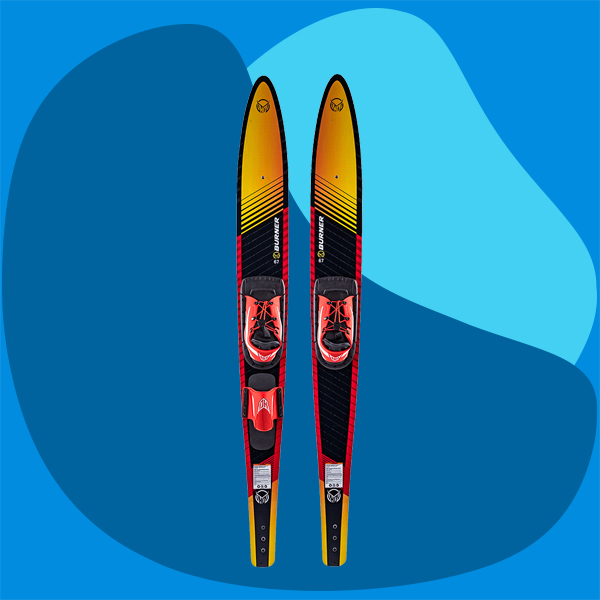
Water Ski Maintenance
The maintenance of your skis begins right after each use. Rinse them with fresh water to remove any salt or grime, which could damage the material over time. Use a soft cloth to wipe them down, ensuring you reach all nooks and corners. If needed, a mild detergent or a specially designed ski cleaner can help with stubborn stains or residues.
Remember to dry your skis thoroughly before storing them, and regular inspection for any dents, cracks, or de-lamination is crucial. Small nicks can be fixed using a repair kit, while more severe damage may require professional attention.
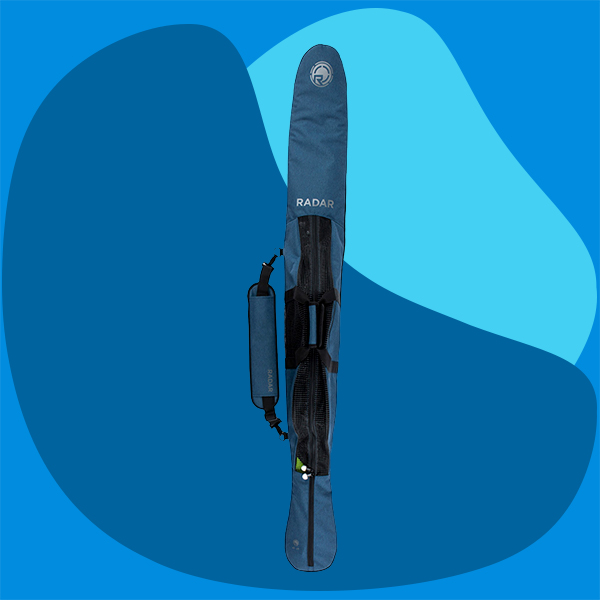
Water Skiing Bag Maintenance
A water ski bag is an often-overlooked part of your gear but it plays a vital role in protecting and extending the lifespan of your water skis and other equipment. However, dirt, sand, salt, or moisture can accumulate inside your bag, which can then transfer onto your skis and other equipment. Therefore, you should empty your bag after every trip, shake out any debris, and wipe down the interior and exterior with a damp cloth.
In the case of stubborn stains or dirt, you can use a mild detergent or a fabric cleaner suitable for the material of your bag. Use a soft brush or sponge to scrub gently and rinse well, and avoid using harsh chemicals or abrasive brushes as they could damage the material or affect its water resistance.
Once cleaned, dry your bag thoroughly before storing or using it again. You can hang it up in a well-ventilated area away from direct sunlight, and you should make sure to avoid using a machine dryer or a heater, as excessive heat can warp or shrink the material.

Troubleshooting Common Wear & Tear
Water ski equipment, despite its robust design and construction, is not immune to wear and tear due to frequent use and exposure to harsh environmental elements. Being able to troubleshoot and identify common issues associated with this wear and tear can extend the lifespan of your gear and ensure your safety in the water.
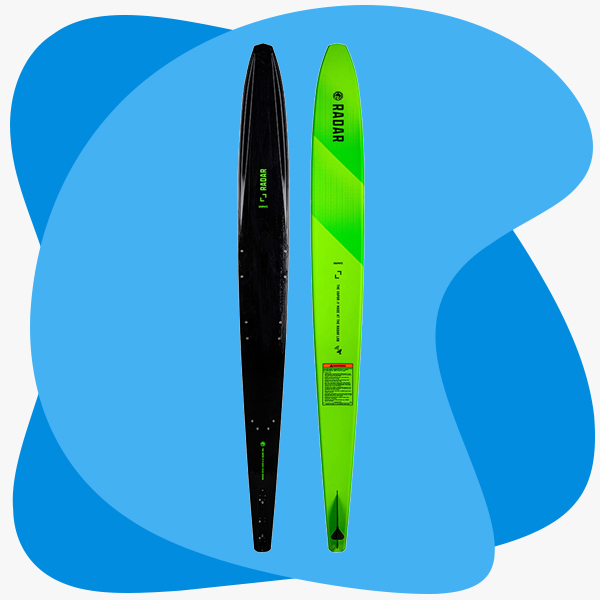
Caring For Your Water Skis
Common issues with water skis include scratches, dents, or cracks on the surface. Minor scratches can often be buffed out or filled with a repair kit, but larger cracks or dents can compromise the performance of the skis and should be professionally repaired. Keep an eye out for delamination – when the top layer begins to peel away from the core. If left unchecked, it can worsen rapidly and ruin your skis.

Caring For Your Ropes & Handles
Regularly inspect your ropes for any signs of fraying or kinks, as they could snap under tension. The handle should also be checked for any signs of wear, such as loose or torn grip tape or a worn-out core. If you find significant wear on your rope or handle, it's best to replace them to prevent equipment failure during a run.
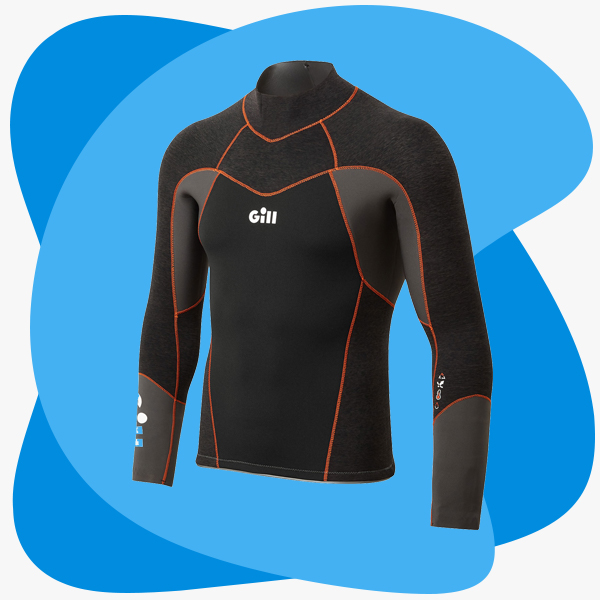
Caring For Your Wetsuit
Over time, the neoprene material of your wetsuit can become thin and lose its insulation properties. Check for any signs of this, along with any tears or loose stitches. Zippers and seals should also move smoothly and close securely.
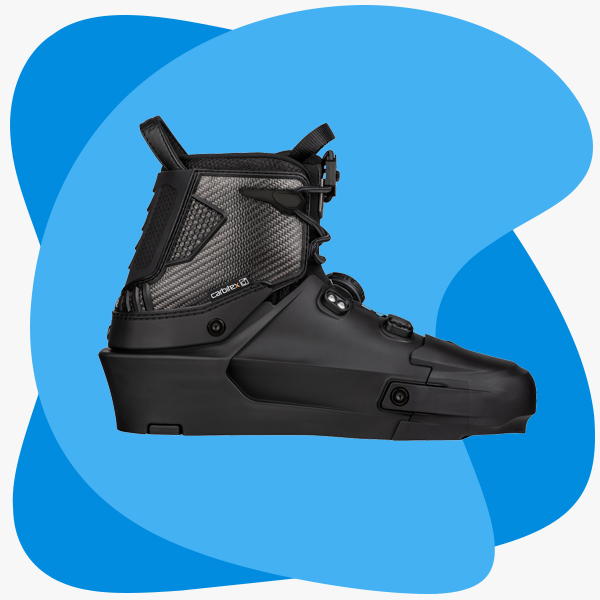
Caring For Your Water Ski Bindings
Over time, the bindings or boots can become loose, or the inner padding might wear down, making them less comfortable or less effective in securing your foot. Look for signs of wear on the fasteners and tightening system. Cracks in the plastic shell or worn-out padding need immediate attention and possibly replacement.
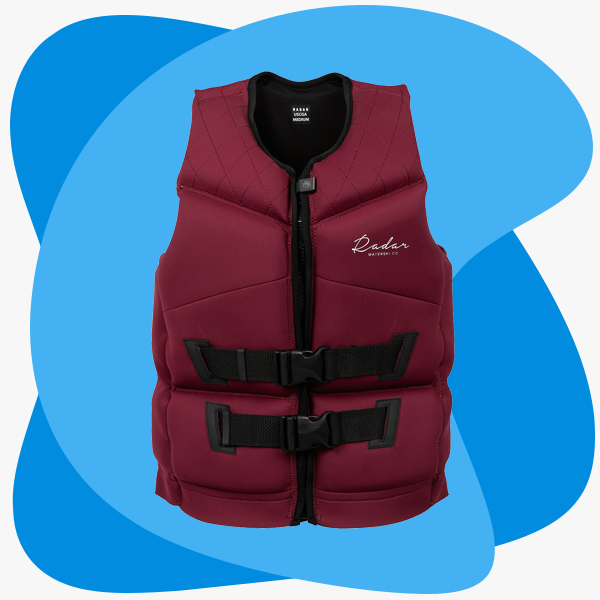
Caring For Your Life Vest & Gloves
It’s essential to check your life vest for any tears or holes that could reduce its buoyancy. The straps and buckles should also be inspected for any signs of wear or damage, and gloves should be checked for worn-out areas or loose stitching, which can affect your grip on the handle.

Caring For Your Water Skiing Bag
Make sure to check your bag regularly for any tears, broken zippers, or loose straps. An ill-functioning bag can lead to damage to your equipment during transportation or storage. Minor issues like a stuck zipper can be fixed at home, but more significant problems may need professional repair or replacement.

Professional Maintenance & When To Seek It
While regular at-home maintenance is crucial for keeping your water ski equipment in good shape, there are times when you should seek professional help for maintenance and repairs. It's essential to recognise these situations to ensure your equipment continues to function optimally and safely. Here's an in-depth look at when professional maintenance becomes necessary:
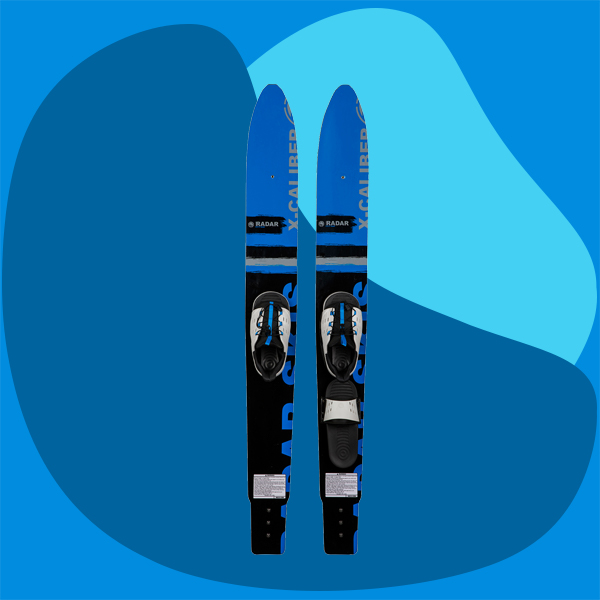
Deep Gouges & Cracks in Skis
Minor scratches and dents in your water skis can often be repaired at home with a simple repair kit. However, if you notice deep gouges, significant cracks, or delamination, it's time to take your skis to a professional. Such damage can affect the performance of your skis and, in extreme cases, may even pose safety risks.
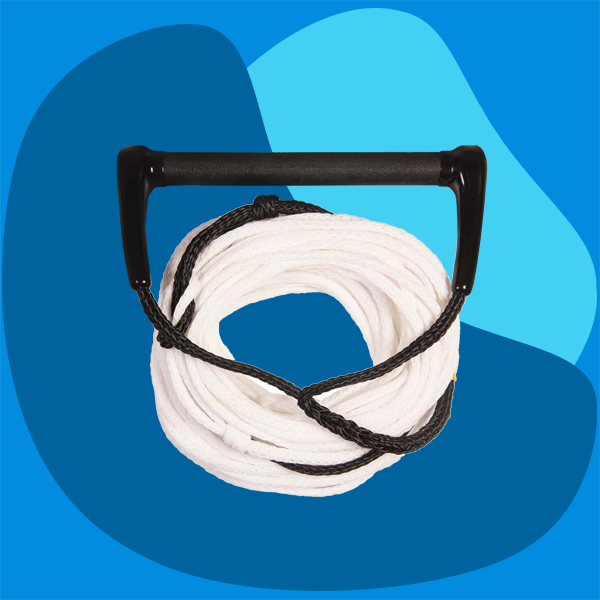
Rope & Handle Wear
If your rope is showing signs of fraying or kinking, or if the handle's core is worn out, consider getting a new one from a professional. A professional can also help you choose the right rope and handle for your skill level and usage.
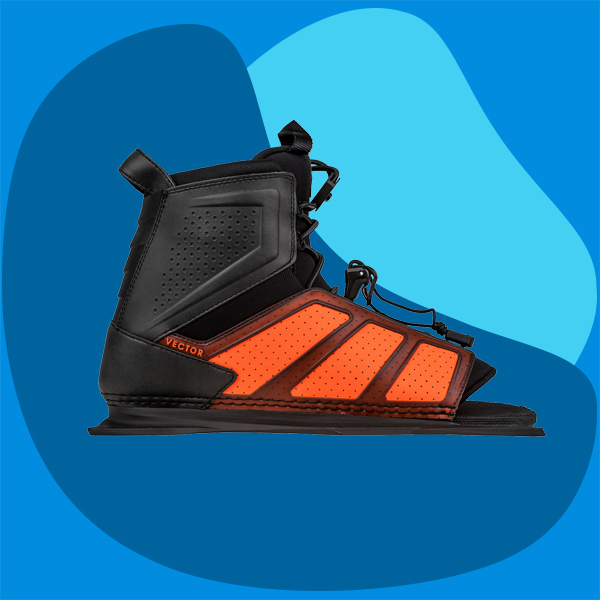
Binding Replacement or Adjustment
Over time, the bindings or boots on your skis might become loose or worn out. If you're not comfortable with the process of adjusting or replacing them yourself, a professional can ensure it's done correctly to avoid accidents or further damage.
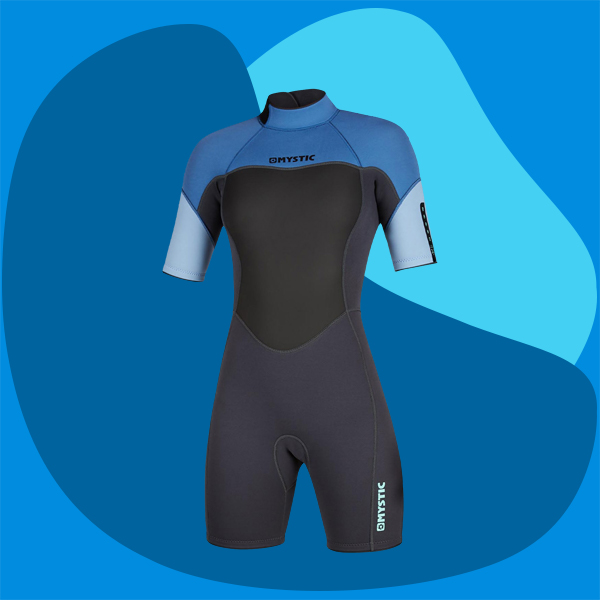
Life Vest & Wetsuit Repairs
If your life vest has tears, damaged fasteners, or shows signs of reduced buoyancy, it's essential to seek professional help. Life vests are vital safety equipment, and any compromise in their integrity can be dangerous. Similarly, neoprene wetsuits can be challenging to repair at home. If you notice thinning material, tears, or issues with the zippers or seals, take your wetsuit to a professional for repair or replacement.




